Subcontinent from early 18th century
- Books Name
- Social Science Book
- Publication
- Cognizance Publication
- Course
- CBSE Class 7
- Subject
- Social Science
CHAPTER 1
Tracing Changes Through A Thousand Years
How we are tracing changes through 1000 years?
We all have heard the saying. The only thing constant is change. Nothing expresses this phenomena better than our history. While we study history, what we're actually doing is tracing changes through ages and understanding how we got there.
While the philosophical aspect of these questions remain unanswered, thankfully the geographical one has been explained to quite an extent.
The Indian map was introduced by a French cartographer.
The maps by Arab geographer Al Idris ( 1154 ) and French cartographer (1720) gave a large sketch of the Indian subcontinent in earlier times.The art and science of graphically representing a geographical area, usually on a flat surface such as a map or chart, is known as cartography. It is a part of geography.Someone who makes maps is called a cartographer.When historians read documents, maps and texts from the past, they have to be sensitive to the documents.
Subcontinents from early 18th century
New old Terminologies
Different historical backgrounds
As you have seen meanings of words change overtime.Term Hindustan is known as India, the modern nation state today.The term Hindustan was first used by Min-haj-i-sirrah in 13th century, a Persian chronicler. The word Foreigner today means a person who is not an Indian.
In the medieval period, the word foreigner meant any stranger who appeared in the village not belonging to their society or culture. In Hindi, the term pardesi was used to describe an alien. In Persian it was called Ajnabee
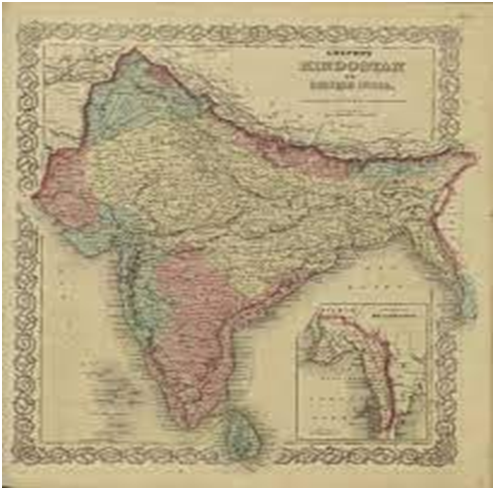
Historians and their sources
Types of sources to learn about the past based on their period of study and the nature of the investigation.Coins, inscription, architecture and textual records will provide information. Gradually paper became cheaper and more widely available and hence people use paper to write holy text, chronicles of rulers, letters, and teaching of Saints, petitions and judicial records, and for register of accounts and taxes which were called manuscripts.
Scripts were collected by wealthy people, bowlers, monasteries and temples. They were placed in libraries and archives.These manuscripts and documents provide a lot of detailed information to historians, but they are also difficult to use.Place where documents and manuscripts are stored are called archives.
There were no printing press in those days, so scribes copied manuscripts by hands. As scribes copied manuscript, they also introduce small changes- a word,a sentence . These small differences grew over centuries of copying until manuscripts of the same text became substantially different from one another. So the record that have to come to us are quite different from the original, but no evidence is found as the original writing is not found. Miniature paintings work sometimes used to illustrate the text of manuscripts.
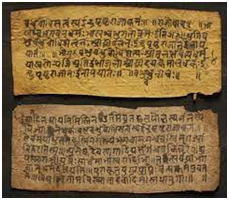
They are so beautiful that later collectors often took the manuscript apart and sold just the miniatures.Authors device these as chronicles. The 14th century Chronicler Ziauddin Barani wrote his chronicle first in 1356.
Second version in 1358. The two differ from each other, but historians did not know about the existence of the first version until the 1960s.It remained last in large library collections.
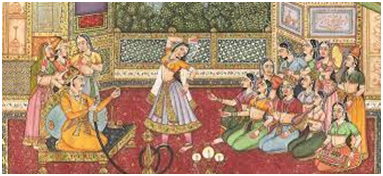
Documents from past
- Books Name
- Social Science Book
- Publication
- Cognizance Publication
- Course
- CBSE Class 7
- Subject
- Social Science
Documents from the Past
Papers,documents and texts
The texts are manuscripts and voluminous historical literature which are related to the diverse traditions within Hinduism. A few of these texts are shared across different traditions and they are broadly considered Hindu scriptures.These include the Puranas, itihasa, and Vedas.Scholars define the term “Hindu scriptures” given the diverse nature of Hinduism, but many list the Bhagwad Gita and the Agamas as Hindu scriptures.
There are two historic classification of the texts.Shruti- which is heard, and Smriti that which is remembered. The shruti refers to the body of most authoritative ancientreligious texts believed to be eternal knowledge authored neither by human nor the divine agents, but transmitted by sages (rishis).These comprise the central canon of Hinduism. It includes the four Vedas including its four types of embedded texts- the Samhitas, the brahmanas, the Aranyakas and the early Upnishands.The Shrutis, the Upanishads alone are widely influential among Hindus, considered scriptures par excellence ofHinduism and their central ideas have continued to influence its thoughts and traditions.
The Smrititexts are a specific body of Hindu texts attributed to author as a derivative work, they are considered less authoritative than Shruti in Hinduism. The Smriti literature is a vast corpus of diverse texts, but is not limited to with Vedangas, the hindu epics, the Sutras and Shastras, as the text of Hindu philosophies, the Puranas, the kavya, or political literature, the Bhasyas, and numerous Nibandhas (digests) covering politics, ethics, culture, arts and society.
Many ancient and medieval Hindu texts were composed in Sanskrit ,many others in regional Indian languages.Prior to the start of the common erra, the Hindu texts were composed orally, then memorized and transmitted orally, from one generation to the next, for more than a millennia before they were written down into manuscripts.This verbal tradition of preserving and transmitting the text from one generation to next continued in the modern era.
The Hindu scriptures provide the early documented history of arts and science forms in India, such as music, dance, sculptures , architecture, astronomy, science, mathematics, medicine and wellness.Valmiki’sRamayana (500 BCE to 100 BCE) mentioned music and singing by Gandharvas, dance by Apsaras such as Urvashi, Rambha, Menaka, Tillotama and by Ravana’s wife who excelling in nrityageeta or “singing and dancing” and nritavidtra or “playing musical instruments”.The evidence of earliest dance related texts are in, Natasutras, which were mentioned in the text of Panini, the sage who wrote the classic on Sanskrit grammar, and who's dated to about 500 BCE.This performance art related Sutra text is mentioned in the other late Vedic texts, as are two scholar namesShilalin and Krishashva, who are credited to be pioneers in the studies of ancient drama, singing, dance and Sanskrit composition for these arts. Richmond estimate the Natasutras to have been composed around 600 BCE, whose complete manuscript has not survived in the modern age.
The Vedas are a large body of Hindu texts originating inVedic period in northern India.The Rigveda being composed in 1200 BC,and it's Samhita and Brahmanas complete before, about 800 BCE composed in Vedic Sanskrit hymns, the texts constitute the oldest layer of Sanskrit literature and the oldest scripture of Hinduism.Hindus considered the Vedas to be a ‘apauruseya’ which means “not of a man,superhuman” and impersonal.The knowledge in the Vedas is believed in Hinduism to be eternal,uncreated neither authored by human nor by divine source, but seen, heard and transmitted by sages.The Vedas, for orthodox Indian theologians,are considered revelation some way or other work of the deity. In the Hindu epic the Mahabharata,the creation of Vedas is credited to Brahma.
There are four Vedas: The Rigveda, the Yajurveda , the samveda and the Atharvaveda.Each Veda has been subclassified into four major text types-The Samhitas(mantras and benedictions), the Aranyakas(text on rituals, ceremonies, sacrifices and symbolic-sacrifices),the Brahmanas(commentaries on rituals,ceremonies and sacrifices),and the Upanishads(text discussing meditation, philosophy, and spiritual knowledge).
The Upanishads are collection of the text which contains some of the central philosophical concepts of Hinduism.The concept of Brahaman (ultimate reality) and Atman(Soul) are the central ideas in all the Upanishads, and “know your Atman” their thematic focus.The Upanishads are the foundation of Hindu philosophical thought and its diverse traditions.More Then 200 nations are known of which the first dozen or so, the oldest and the most important, and are referred to as the principal or main( mukhya) .The mukhya Upanishads are found mostly in the concluding part of the Brahmanas and Aranyakas and were, for centuries, memorized by each generation and passed down verbally.
Smriti
The text that appeared afterwards were called Smriti.Smriti is a literature which include various Shastras and itihasas(epics like Ramayana and Mahabharata)HarivamsaPuranas, Agamas and Darshanas. The Dharma-shastras(law books), derivatives of Dharma-sutras.Other examples were bhautikashastra “physics” the rasayanashastra “ chemistry”, jivashastra “ biology”, vastushastra “ architectural science”, shilpshastra “ science and sculpture”, arthashastra“economics” and nitishastra “ political science”.It also includes Tantras and Agama literature.The genere of tax include the Sutras and Shastras of the six schools of Hindu philosophy:Samkhya, Yoga, Nyaya, Vaishishka, Mimansa and Vedanta.
Puranas
The Purana are avastgenre of Hindu texts and encyclopedically cover a wide range of topics, particularly legends and other traditional lore.Composed primarily in Sanskrit but also in regional languages, several of the texts are named after major Hindu deities such as Lord Vishnu, Lord Shiva and Goddess Devi.The Puranic literature is encyclopedic and it includes diverse topics such as cosmogony, cosmology,genealogies of god, goddesses, Kings, heroes, sages, folktales, temples, medicine, grammar as well as the theology and philosophy.The content is diverse across the Puranas, and each Purana has survived in numerous manuscripts which are themselves comprehensive and voluminious.The Hindu Puranas are anonymous texts and likely the work of many authors over the centuries,in contrast, most Jaina Puranas can be dated and their authors assigned.There are 18 Maha Puranas(great puranas) and 18 UpaPuranas(minor Puranas) , with over 400,000 versus.The Puranas do not enjoy the authority of a scripture in Hinduism, but are considered a Smriti.TheseHindu texts have been influential in the Hindu culture, inspiring major national and regional festivals of Hinduism. The Bhagwad Purana has been among the most celebrated and popular text in the Puranic Genre.
Social construct
- Books Name
- Social Science Book
- Publication
- Cognizance Publication
- Course
- CBSE Class 7
- Subject
- Social Science
Social Construct
New social and political groups
The study of the thousand years between 700 and 1750 is a huge challenge to historians, largely because of the scale and variety of developments that occurred over the period. New technology like Persian wheel in irrigation, the spinning wheel in weaving and firearms in combat, new foods and beverages arrived in the subcontinent- potatoes, corn, chilies, tea and coffee.All these innovations- new technologies and crops came along with people, who brought other idea with them as well.
This was a period of economic, political, social and cultural changes.This was also a period of great mobility when group of people travelled long distances in search of opportunity.One such group of people who became important in this period were the Rajputs derived from the word” Raja Putra’ , son of a ruler.
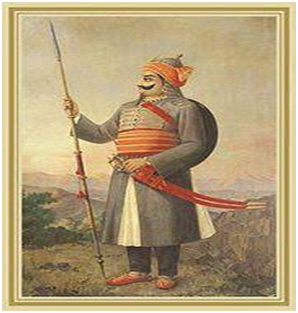
Other group of people such as Marathas, Sikhs, Jats, Ahoms and Kayasthas also used the opportunities of the age to become politically important.Throughout this period , there was a gradual clearing of forests and extension of agriculture. This forced many forest dwellers to migrate.Others started tilling the land and became peasants. These group of peasants began influenced by regional markets, chieftains, priests, monasteries and temples.They became part of large societies and were required to pay taxes and offer goods and services to local lords.
As society became more differentiated, people were grouped into jatis or sub- castes and ranked on the basis of their backgrounds and their occupations. Ranks are not fixed permanently, and varied according to power, influence and resources controlled by members of jati. Jatis frame their own rules and regulations to manage the conduct of their members.These regulations were forced by an assembly of elders described in some areas as the Jati panchayat. But justice were also required to follow the rules of their villages.Several villages were governed by a chieftains. Together, they were only one small unit of a state.
Region and empire (Northern, Southern)
Large states like those of the Cholas,Tughluqs and Mughals encompassed many regions. A Sanskrit prashasti praising the DelhiSultan Ghiyasuddin Balban tells that he was the ruler of a vast empire that stretched from Bengal in the east to Ghazni in Afghanistan in the Westand included all of South India. There were conflicts between various States and the people of different region fled from their armies. When the Mughal Empire declined in the 18th century, it led to the emergence of regional states.
Amir Khusrau noted in the 13th century that there were many different languages in every region of this land. In southern karnataka, Sindhi,Lahori, Kashmiri, Dvarsamudri ; In Andhra Pradesh ,Telangani ;In Gujarat, Gujari; In Tamilnadu, Malabari.In Bengal- Gauri; In Eastern UP, Awadhi; around Delhi, Hindawi. In contrast to these languages, there was Sanskrit which did not belong to any region. It was an old language that ‘common people did not know it, only the Brahmans do’.
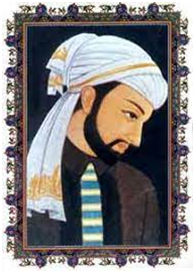
Culture
- Books Name
- Social Science Book
- Publication
- Cognizance Publication
- Course
- CBSE Class 7
- Subject
- Social Science
Culture
Older new religions
Religion was often closely associated with the social and economic organisation of local communities. It was during this period that important changes occurred in the Hindu religion.It included the worship of new deities, the construction of temples by royalty and the growing importance of Brahmans in the Hindu religion. Knowledge of Sanskrit helped Brahmans to earn respect. Another development in religion.
The idea of beauty, of a loving personal deity that devotees could reach without the aid of priests or elaborate rituals. Many religions came to India at this time. Merchants and migrants first brought the teaching of the Holy Quran to India in the 7th century. Muslims regard the Quran as their holy book and accept this over entity of one God, Allah, whose love, mercy and bounty embrace all those who believe in him without regard to social background. Many rulers were patrons of Islam, and the Ulama learned theologians and jurists.
Expert historians time is not just a passing of hours, days or years as o'clock or a calendar. It also reflects changes in social and economic organisation, in the persistence and transformation of ideas and beliefs. The study of time made it easier to divide the past into periods that possess shared characteristics. The British historians divided the history of India into three periods. Hindu, Muslim and British.This division was based on the idea that the religion of the rulers was the only important historical change, and that there were no other significant development.Most historians look to economic and social factors to characterize the major element of different moments of the past.
* The life of hunter gatherers, early farmers and early empires were called early societies.
* The growth of Imperial state formation, the development of Hinduism and Islam as major religion and the arrival of European trading companies were called the medieval Period.
* The lost data was called Modernity, which carried a sense of material progress, an intellectual development.

 Cognizance Publication
Cognizance Publication
